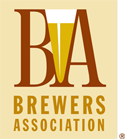There are three factors that need to be optimized to ensure draught beer is at its highest quality—sanitation, refrigeration, and carbonation. All factors are equally important in terms of “quality,” but from a safety standpoint, sanitation is paramount.
A Technical Snapshot: How Beer is Made
The best way to imagine what it takes to maintain the integrity of draught beer is to consider the conditions under which beer is produced. This includes everything from mashing and boiling to fermenting and carbonating. Grain is mashed in water to release enzymes that produce simple fermentable sugars (maltose and glucose) for yeast to consume. The sugar water is then boiled to kill microorganisms (wild yeast, mold, and bacteria) while simultaneously adding hops to acidify and season the beer.
Historically, the acidity of beer along with the alcohol produced from fermentation was believed to prohibit microbial growth in a finished beer. While these attributes do inhibit bacteria, mold, and yeast, they do not prevent all microbial strains from growing. For this reason, most beers, with the exception of certain conditioned beers, are refrigerated immediately after fermentation is complete.
The Importance of Refrigerating Draught Beer
The general range of recommended refrigeration temperatures for beer is 30-39°F. Maintaining beer within this temperature range is important for four reasons:
- Bacteria, mold, and yeast are believed to be inactive at temperatures below 40°F.
- The ability of liquid beer to retain absorbed carbon dioxide gas changes drastically as the beer heats and cools.
- Oxidation (staling) occurs in beer more rapidly at higher temperatures, thus decreasing shelf life.
- Beer expiration dates are based on the assumption that the beer will remain at temps below 40°F from the distributor to the retailer to the consumer.
Consistent refrigeration is essential for maintaining the intended quality and character of draught beer.
The Importance of Cleanliness in Draught Beer Quality
Once a keg is tapped, the beer leaves the sterile environment within the keg and is exposed to a variety of factors that may compromise draught beer quality. Sugar and protein residues that are not consumed by yeast during fermentation serve as “leftovers” for other microorganisms to consume. These microorganisms are mainly airborne bacteria, mold, and yeast that will adhere to any surface that offers nutrient value (i.e. unclean beer faucets). Maintaining beer faucets that are free of dry beer residue (sugars and proteins) is the most important step bar staff can take to ensure proper sanitation of a draught system between routine line cleanings. When bacteria, mold, and yeast enter a draught beer line they continue to feed on the available nutrients in the beer, and their byproducts will alter the flavor and quality of the beer.
Inevitably, all draught systems will fall victim to microbial infection. Again, this is one reason why maintaining proper refrigeration temperature is so important. Refrigeration is crucial for maintaining proper carbonation and pour rate as well, and if you own an establishment that sells draught beer, then foamy beer equals lost profits.
The Importance of Beer Carbonation in Draught Beer Quality
Beer carbonation is measured in specific units called “volumes CO2,” and this volume is set to a specific rating by the brewery at a specific temperature prior to kegging the beer. Because the absorption of gas (CO2) in a liquid (beer) changes with temperature change (Henry’s Law), refrigeration temperatures must be kept constant to ensure the carbonation rating is consistent with the rating set by the brewery. If beer temperature is increased (above 39F), less CO2 remains absorbed by the beer, resulting in increased foam.
Choosing the proper gas blend for your system is also a critical determinant of carbonation and flow rate. Carbon dioxide/nitrogen (CO2/N2) gas blends became popular as the sizes of tap systems increased. The N2 content pushes the beer through the beer line while the CO2 is responsible for maintaining the proper carbonation rating.
In general, draught beer carbonation can be maintained by the retailer by pressurizing kegs in the same manner that a brewery uses to set the initial carbonation rating: using 100% CO2 at 10 psi (pounds per square inch) within the correct temperature range. This will maintain a desirable carbonation level while also balancing the keg with the restriction value of the beer line (induced by friction and gravity), resulting in just enough pressure to drive the beer to the faucet without over-carbonating the beer while maintaining a desirable pour rate.
That said, larger tap systems will often have restriction values too great and the keg cannot be balanced with the line using only 10 psi. In other words, 10 psi will not be enough pressure to deliver the beer from the keg to the faucet if the total line restriction (between the keg and faucet) is greater than 10 pounds. This is why additional pressure is applied with the help of nitrogen, an inert gas that is not readily absorbed by beer. Selecting the proper gas blend for a particular tap system requires knowledge of the system’s line restriction rating, static pressure, atmospheric pressure, and elevation.
Unfortunately, many bars today simply run a generic 50/50 or 60/40 (CO2/N2) blend instead of making the additional effort to determine the gas ratio that will correctly match the system to brewery-specified carbonation levels. Find a qualified draught beer technician who is willing and able to do this.
Carbonation, refrigeration, and sanitation issues are common, and usually result from poor maintenance or a lack of attention to detail during installation. Industry professionals should perform routine inspections, which can save the retailer thousands of dollars annually, especially when foaming issues are corrected. Equally important, the retailer must respect specifications and quality standards set by breweries, and take any measures necessary to ensure that only beer of the highest quality and integrity is served to their customers.
The consumer should expect nothing less.
Do you need help maintaining the highest quality of draught beer? Contact us today >



